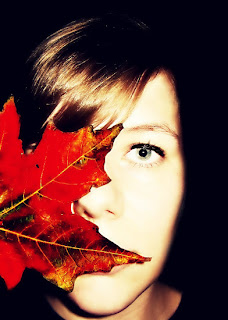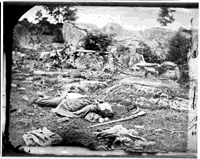Alfred Eisenstaedt
 Alfred Eisenstaedt was born in Germany on December
6, 1898. From an early age he was fascinated with photography and began taking
his own photographs when he was 14, after receiving an Eastman Kodak Folding
Camera, his very first. Without even knowing professional photography existed,
he sold his first photo in 1927, and began his free-lance career for Pacific
and Atlantic Photo’s Berlin office in 1928. "Photojournalism had just
started," Eisenstaedt has remarked "and I knew very little about
photography. It was an adventure, and I was always amazed when anything came
out."
Using massive equipment with tripods and glass
plate negatives, Eisenstaedt produced many photos on assignment of musicians,
writers, and royalty. However, he was also a master of candid photography,
which is the style in which most of the photo’s he’s famous for are in, such as
“The Kiss”.
Alfred Eisenstaedt was born in Germany on December
6, 1898. From an early age he was fascinated with photography and began taking
his own photographs when he was 14, after receiving an Eastman Kodak Folding
Camera, his very first. Without even knowing professional photography existed,
he sold his first photo in 1927, and began his free-lance career for Pacific
and Atlantic Photo’s Berlin office in 1928. "Photojournalism had just
started," Eisenstaedt has remarked "and I knew very little about
photography. It was an adventure, and I was always amazed when anything came
out."
Using massive equipment with tripods and glass
plate negatives, Eisenstaedt produced many photos on assignment of musicians,
writers, and royalty. However, he was also a master of candid photography,
which is the style in which most of the photo’s he’s famous for are in, such as
“The Kiss”.
Alfred acquired a Rolleiflex camera and moved to
America by 1935. Soon after, he became a photographer for Life Magazine. When
asked why he used a Rolleiflex, he responded with “because you can hold a
Rolleiflex without raising it to your eye; so they didn't see me taking the
pictures.” This was very useful in some situations he found himself in, such as
taking photographs of couples saying their goodbyes before heading off to war
in Penn Station. "I just kept motionless like a statue." he said.
"They never saw me clicking away. For the kind of photography I do, one
has to be very unobtrusive and to blend in with the crowd."
 Eisenstaedt was a skilled professional, but he
behaved like an amateur with little equipment. However, this resulted in some
of the most spontaneous moments to be photographed. The key to Eisenstaedt's
genius lay in his humility and humanity. "My style hasn't changed much in
all these sixty years," he explained. "I still use, most of the time,
existing light and try not to push people around. I have to be as much a
diplomat as a photographer. People often don't take me seriously because I
carry so little equipment and make so little fuss. When I married in 1949, my
wife asked me. 'But where are your real cameras?' I never carried a lot of
equipment. My motto has always been, 'Keep it simple.'"
Eisenstaedt was a skilled professional, but he
behaved like an amateur with little equipment. However, this resulted in some
of the most spontaneous moments to be photographed. The key to Eisenstaedt's
genius lay in his humility and humanity. "My style hasn't changed much in
all these sixty years," he explained. "I still use, most of the time,
existing light and try not to push people around. I have to be as much a
diplomat as a photographer. People often don't take me seriously because I
carry so little equipment and make so little fuss. When I married in 1949, my
wife asked me. 'But where are your real cameras?' I never carried a lot of
equipment. My motto has always been, 'Keep it simple.'"
Eisenstaedt had his first one-man exhibit in 1954
at the International Museum of Photography in Rochester, New York. He had many
exhibits following that and received many awards, including a National Medal of
the Arts from President George Bush in 1989 on the White House Lawn.
He passed away in 1995 at the age of 96, but his
memory lives on in his many beautifully photographed pictures.
Photographs
 |
| Alfred Eisenstaedt |
 |
| Maria Helena Buckley |
This first set of photgraphs obviously focuses on a group of ballerina's. Although Alfred's is shot in black and white and Maria's is taken in colour, they have a lot of similarities and so Maria's photo really reminds me of Alfred's. In both photos, the main subject is the center ballerina. She's the girl your eye is directly drawn to first. In both piuctures, this main girl isn't looking at the camera. In Alfred's photo, you can't see her face at all, whereas in Maria's photo you can see the profile. However, I think the fact that you can see her profile in Maria's photo is similar to the fact that you can see her full face in the opposite mirror in Alfred's photo. The second subject in each photo, the thing your eye is drawn to next, is another girl, and in both photo's this girl is directly on the main subject's left hand side. This subject is also very similar in both photgraphs, as they're kind of hunched over and looking off to the side, again not directly at the camera. Lastly, in both photo's these two girls are surrounded by a bunch of other dancer's just kind of doing their own thing. Something I found interesting, Alfred's photo is clearly one taken for Life Magazine, and Maria's photo was taken off the national geographic website!

Alfred Eisenstaedt
Cyd Converse
Yes, another ballet photo. In my researching of Alfred I learned he liked to take many photo's of dancers. I find these two photo's to be similar in a couple ways, not just that they're both black and white! In both photo's, the subject is the feet of four dancers in their pointe shoes. What's interesting to me is that this photo is of dancers in their pointe shoes, yet they aren't en pointe. With that being said, I consider both photographs to be quite beautiful. While the girls in Alfred's photo are obviously sitting down, they still have their feet in some sort of position, and the girls in Cyd's photo are in a position aswell. So the similarity between these two photos is that the subject is the feet of four dancers in pointe shoes with their feet in a position other than the famous en pointe.
Alfred Eisenstaedt
Unknown
The photo taken by Alfred was taken in 1944 at Penn Station. It is one of many photo's taken by Alfred at this time, as there were many couples saying their goodbye's before their husbands went off to war. The second photo doesn't say who it was taken by, but it was actually taken before Alfred's, during the first world war. These two photos are very similar though, as they both show such emotion. They both make me really sad, as it they make you think how unbearable it would have been to have to say goodbye to the one you love, not knowing if you'll ever see them again, and not being able to talk to them every day. Both the photo's show the woman crying, not wanting to say goodbye to the man she loves, and the man doing what he can to comfort her, not wanting to say goodbye either.
Alfred Eisenstaedt
Iikka Valkila
Now, at first glance these two photos might not look as though they have any similarities, especially because they both have completely different settings (Alfred's takes place in a street, Iikka's near a lake). However, I believe they are quite similar. The subject in each is a lone bride, and each evokes a kind of sadness. The solitary bride in Alfred's photo is made to look like she's running. This makes you think she's running from her own wedding, which is sad for both her and the man she's leaving. The bride in the second photo looks as though she's been left, which is quite sad in itself. So, although both brides look like their along for different reasons, both are alone and both photos evoke strong emotions.
Alfred Eisenstaedt
Enche Tjin
The photo taken by Alfred was during a puppet theater show for children. The moment he took the photo was the moment the dragon was slain, and the reaction of the kids is hilarious and makes for a great photo. The photo taken by Enche is during a Ludacris concert. The teens are reacting to the music in what a manner that makes it seem like they're having a good time. Although both these photo's are different settings and different people, they are very similar in the sense that they are both completely candid, neither was staged at all, and both are reaction photos, taken at the perfect moment to show the essence of what the audience is viewing.
Alfred Eisenstaedt
Jack Cardiff
Another thing I noticed while reasearching Alfred is that he took a lot of pictures of actress, musicians and famous people. He took many photos of actress Sophia Loren (pictured above) aswell as singer Marilyn Monroe and President JFK. Jack Cardiff was a similar photographer in this way, as he also took many photos of actresses and singers. He too photographed Marilyn Monroe and Sophia Loren several times, and an actress who reminds me of Sophia Loren, named Audrey Hepburn (pictured above).
Sources


















+flees+with+other+children+after+South+Vietnamese+planes+mistakenly+dropped+napalm+on+South+Vietnamese+troops+and+civilians..jpg)















